#harsh!nyala
Text
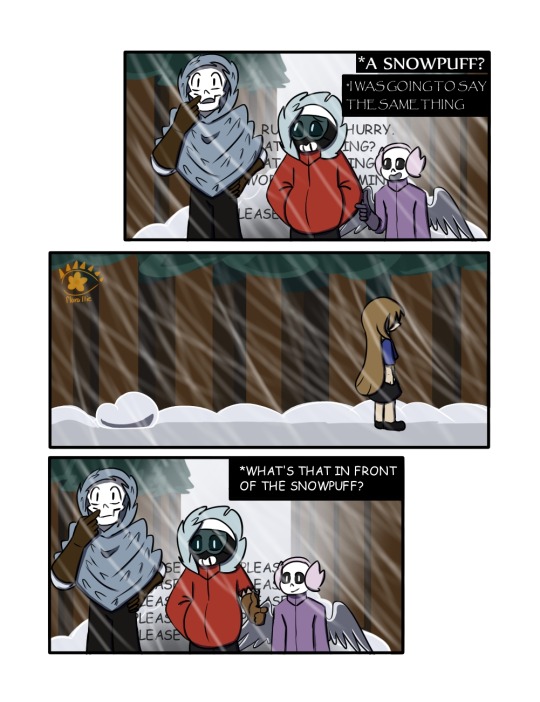
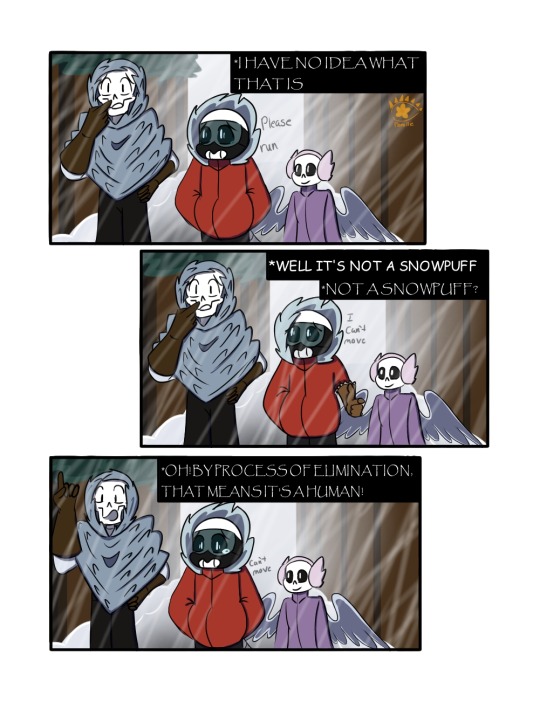

First | <- Prev | Next ->
I will be going on vacation. I will be in the mountains for a week snowboarding. I might have more time to draw but don't hold your breath.
I promise I will post the Rockstar AU comic soon. I just need some more time.
2 notes
·
View notes
Text
The Three Families
The three grand familes... Family Vacant, Family Nala (later known as Family Nyala) and Family Húdōr. These three families were the major bloodlines of the "gods", containing many other inside them.
They didn't all start at the same time as it took time to learn the different type of 'code' they used in different dimensions.
The first was Vacant as they first created the end islands as an experiment, later on creating the gateways and the portal to overworld.
When they went into the Overworld a small family dedicated themselfs to understand it thus the family name Húdōr being born. They acompolished the most with a mixture of the possibilities of the Overworld and their serious dedication.
It didn't took them much time to discover the Nether, putting the House Nala (Nyala) on the table. The family stayed alive in the harsh conditions for a while while 'coding' the dimension before humans started to appear in the Overworld and the "gods" decided to go back to their homeland, to the End.
Some members stayed, mixing into the humans and creating the mixed bloodlines which gave birth to speedrunners. The 'curse' of them getting weaker by generation the more the blood mixes.
#i wrote this at near midnight so it may be a bit funky#like the grammer and spelling#next part of my lore#i might work on actually creating the sub-familes#and next you see me making a freaking bloodline map of the speedrunners#i actually have some ideas of who is in which one already#btw if i say im finished with something don't bealive me#*looks at the red baron au*#like i said i was done with it at feburary#after i was done with the first oneshot#but now it has 6 oneshots + two from its spinoff#and i might still work on it lol#i went out of topic didn't i lol
3 notes
·
View notes
Text
Ethiopia Remains a Land of Incomparable Beauty
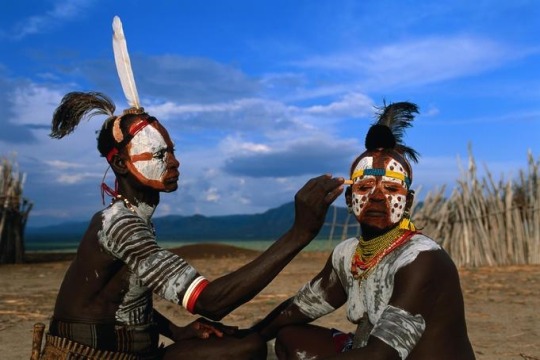
Riven by various significant and enormous gorge, assigned by high and famous mountains neck-bound by a chain of lakes, water by grandiose streams, studded with expending deserts and unbelievable inclines that plunge down from its great nations, Ethiopia remains a spot that is known for remarkable gloriousness.
In any case, it isn't only the sheer size of its physical gloriousness which portrays this land where the Blue Nile has cut one of the world's generally significant and most heavenly gorge.
Its old and medieval tourist spots, its happy and lovely social orders, and its varied and routinely fascinating untamed life set it apart from all else.
Ethiopia, dismantled through its inside by the scar of the Great Rift Valley, is as old as time itself. It is a land stating a history that profits to the Old Testament.
It is where there is Sheba, and of Axum and Lalibela, of rising above stone monuments and the Ark of The Covenant - a land that was Christian before a great deal of Europe however then darken to Europe for quite a while or progressively; a land that resided in limbo, disregarded by the world which it generally recollected. For more information about the Ark of The Covenant, see Patrick Richardson heads to Ethiopia searching for the Ark of the Covenant.
From the tremendous spread of Lake Tana, wellspring of the Blue Nile River in the northern great nations, through the relics of Axum, seat of Sheba's unimaginable domain, down along the singing inferno of the Danakil Depression, one of the world's bottommost limits, and high amidst the wonders of the Simien and Bale Mountains to the perfect, game-filled agitated territories of the remote southern glades. Take more information Omo Valley Photo Tour
The Ethiopian great nations, supported with a mellow climate and breathtaking mountain scene, offer wonderful trekking openings. The boss settled in areas for trekking are the Simien and Bale Mountains National Parks. The later appearance to this field of voyager activity is the remote South - West great nations east and west of the Omo valley, where strong and wonderful social orders acclaim the interest of scene, greenery, and fauna.
Less strenuous but instead all the more loosening up are the stunning close by traits that stream the banks of Rift Valley lakes, or resort zones close Addis Ababa, for instance, a walk around the vineyards of Ambo.
The honors of a trek in the Simien mountains join awesome points of view from the northern edge, the three endemic warm blooded creatures - Walia Ibex, Gelada Baboon, and the Simien Fox similarly as Ras Dashen, the country's most raised top at 4620 meters.
Group has a less had, progressively unrestrained mosaic of high-height level, heather moorlands, and thick juniper forest with a viably watched masses of Mountain Nyala and Simien Fox similarly as some fabulous fowls, an impressive part of them endemic.
Riding and Pony trekking
In such an unpleasant circumstance horses and jackasses have a noteworthy effect in the transportation of people and items. So it isn't astounding that horse riding can be gotten a kick out of numerous bits of Ethiopia. A trek in the Simien Mountains on a surface-footed pony grants visitors to locate a decent pace 4 x 4 vehicles find irksome.
Climbing
A ton of Ethiopia is harsh rough country, and the odds to vanquish mentioning apexes and feign are unending. The Simien Mountains, the Bale Plateau and various locales give faultless excursions. Rigging is every so often available locally and should be conveyed with you.
2 notes
·
View notes
Photo
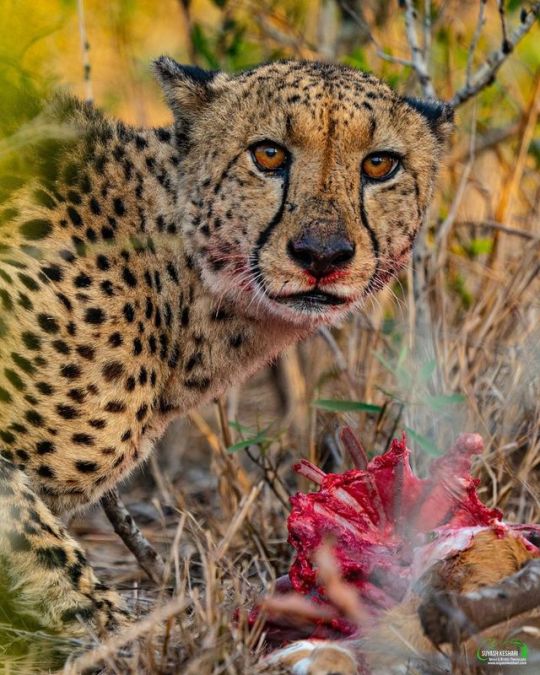
Although Cheetahs are formidable hunters, they are the smallest and most slender of the big cats. Being quite low on the list of big predators in Africa, Cheetahs are very nervous of other carnivores. Any interaction with a lion, leopard or even a hyena or wild dog can possibly be life threatening for a Cheetah. Evolutionary, Cheetahs gave up strength for speed - they are the fastest land mammal on earth. Another interesting evolutionary characteristic and perhaps the most interesting are the black teardrops running down their eyes. Since most big cats along with Hyenas are active during the night, Cheetah’s evolved to be day time hunters. The black marking absorbs the harsh rays of the sun and helps these big cats focus on their prey while chasing them at top speeds. If you notice in any of my tiger/lion photos, you’ll see that these big cats - as opposed to Cheetah’s have a white lining below their eyes - which helps them absorb whatever little light there is during the night and assist their already enhanced vision 🌳🐆🌳 With @zulunyala ——————————————— Shot with the Sony A9 and Sony 200-600 F/5.6-6.3 G OSS @sonyalphain (at Zulu Nyala Heritage Safari Lodge) https://www.instagram.com/p/B2o0PtPni5H/?igshid=qgne9yfot30p
0 notes
Text
Day 6: Mark, stop trying to make leopard happen. It's not going to happen
Today we had another early morning safari. We of course started off searching for the elusive leopard. Now the lady guide has delivered the leopard 3 times to her group while we beg and barter for scraps of information on their sightings. We did see all the usual suspects though, rhino, rhino babies, hippos, Vermeer monkeys, zebras, warthog, wildebeest, impala, Nyala, and giraffe. One giraffe was only 1-2 days old and still had the umbilical cord attached. Giraffes are born as tall as a human and weighing about 200 kg! They fall to the ground out of the womb and the impact gets their breathing started. This early impact to the noggin may explain their incredibly awkward fighting moves. We have a video that we will post of this later. What it lacks in visceral impact, it makes up for with some of the best neck to neck combat you’ve ever seen.
Zulu Nyala has 19 rhinos currently. One of the rhinos we saw this morning got shot in the leg by a poacher when it was young. They were able to set the bone for him in a plaster cast. This is the first time a wild animal has successfully had a bone set this way, at least according to Mark. He seemed confident enough for the purposes of the story.
After the morning safari we had a quick breakfast and headed off to Emdoneni Cheetah project. Here was saw four different kinds of cats: African wild cat, caracal, serval, and Cheetah, the most (only?) exciting one being the cheetah. But it was super exciting! This project actually lets its cats back out into the wild as soon as they show they can survive, unless they came to the project already domesticated. We got to go into the enclosure with 2 of the Injured cheetahs and have our picture taken with them. They used to let people interact with them, right up until a few weeks ago when there were two cheetah attacks on the visitors in one week. I would have taken my chances but Justin kept a close eye on me.
The cheetahs were majestic with their beautiful tails used for balance during a hunt. How many spots do you think a cheetah has? Did you guess 1500 to 2000 spots? Cheetahs can run up to 120km/hr, but can only hold that pace for 20 seconds. Therefore if they don’t catch their prey in that amount of time, they abandon it. Cheetahs will occasionally also hunt together so they can take down larger prey, like a wildebeest (nature’s tastiest animal). On the way out, one of the cheetahs was prancing towards the fence line, so naturally I held the camera up to the fence to film this grace. I was mesmerized. At least until I finally heard Justin yelling at me to be careful (this is a theme for the trip) and saw the guides running towards me. They said I was too close to the fence and the cheetah that was prancing towards me could have gotten his head through that fence and bitten my hand off. I disagree, but will post the footage and let you decide for yourself.
To be fair, it’s not like I was the only one who got scolded. Another girl was running around, which is a big no-no around predatory cats. Yes, she was six but she seemed mature for her age.
It was neat seeing the cheetah so close up, but seeing the cheetah in the wild is much more spectacular!
We got to interact with the African Wild cat (which is clearly just a house cat, you actually have to have a DNA test done to know which is which), and the serval (which is just a weird huge house cat). Soon after we got into the enclosure with the serval, the cat sprayed (meaning squirted with cat urine) a woman and kid, much to Justin’s delight. It was pretty disgusting and we kept our distance from that cat! (And those people)
On our drive back to the lodge, we had to stop for gas. Gas here is not self serve, and the workers wash down your entire car with one of those squigies while you watch. You are supposed to tip them, but we had no small bills. I asked if I could tip on the credit card, and he said no,so I asked if he had change or if it I could get some from inside. He said he had change. So I handed him 100 Rand and asked for change. He said thank you, showed all of the men working with him what a great tip he got. And came back eventually and told us we were done. We laughed and moved on, he sure was happy with his 100 Rand (about $8 USD) tip, and we had a lessons learned.
We came back to the lodge, had a delicious lunch, and relaxed until our 4:00 evening safari. It was raining at this time, so Mark (you might remember him, the one with the eyes) seemed hesitant to go out. However, our safari vehicle group is hard core and we were not letting him off the hook. We put our ponchos on and we were off searching for animals. The fact that our part of the jeep is covered while Mark sits in the rain doesn’t make us any less hardcore right?
It was a slow start and everyone was cold and wet. But we persevered until the animals came out. We got to see giraffe (one of them pregnant) drinking from the pond, which can only be described as gracefully silly. We followed behind a rhino walking down the road with quite the swagger, as to not let us pass him, so we rolled behind him slowly until he made the turn to the watering hole.
We saw three elephant, two that tried to charge the safari vehicle and were stopped in their tracks by Marks harsh words and loud noises. It was funny seeing them angrily swinging their giant trucks away from us and pouting their way across the street.
We also got to see a baboon, and at the very end while tracking that damn leopard we saw a jenet (a small cat). It was all definitely worth going out in the rain.
Then we came back here, ate a huge dinner with dessert, and watched a performance of the tradition dancers while we stuffed our faces. We witnessed that the traditional dance consists primarily of violently kicking your own face.
Favorite part of the day: Getting charged at by the elephants crossing the street, and hearing Mark discipline them, and it working.
Fun facts:
Rhino-you can tell male and female apart because the women have the long horns and the men have shorter stupider horns.
The big five ‘African lion, African elephant, Cape buffalo, African leopard, and rhinoceros’ are the five animals in Africa that if you hunt will hunt you back!
Favorite part of the day:
New sightings: Baboon, Jenet, Rabbit
3 notes
·
View notes
Text
Feel Connected?
New Post has been published on https://tagasafarisafrica.com/africa-travel-news/feel-connected/
Feel Connected?
As rangers we are all passionate about animals and most of us have pets at our homes away from the reserve. However, there is an understanding that one must undertake when becoming a ranger; while we spend hours every day admiring and watching the animals around us, we will never get to touch them or form any sort of affectionate physical bond. They are not pets and these wild animals must remain wild. Now, rangers and guests alike have all had at least the slightest of urges to climb off a Land Rover and cuddle up next to sleeping lions, scratch the belly of a leopard, rub behind the ears of a rhino or shake hands with an elephant’s trunk (well maybe that last one is just me). However, we know that this is never going to happen and, if it did, it would probably be our last living act! But over time we are inevitably drawn towards certain individuals through shades of respect, admiration, sympathy, etc. I formed my first and strongest ‘connection’ with a certain young leopardess…
When I arrived at MalaMala Game Reserve in October 2017, I was (and still am) blown away by the wonders of the reserve’s landscape and the animals that call it home. In the beginning a new ranger must first learn the roads and this can be, nay, is very confusing! An often-asked question from guests at MalaMala is “Do you ever get lost? There are no road signs!” To which I usually reply, “You would never know if I was.” Many hours are spent out in the bush with a map before we are allowed to venture out with guests. This period is often remembered very fondly by all rangers. For days on end it’s just you and the African bush. During my initial phase of learning the reserves intricate and vast road network I’d heard that a female leopard had given birth to a litter of three. Naturally I was determined to learn the roads very well around where she was denning her newly born cubs. For record keeping and research we name our leopards. We do not give them names such as “Skippy” or “Spot” but rather a name associated with the area in which they became territorial or a significant land mark in that area. The mother leopard in question had been named ‘the Lookout female’ as she was often seen on two roads; Dudley Lookout and Flockfield Lookout, both run along the banks of the Sand River. So, I became very well versed in the roads that encompassed her den as well as the valleys and drainage systems that carved out the surrounding land. A truly beautiful place and ideal for raising cubs safely. I enjoyed several sightings of all four leopards together. They were affectionate and playful. I started to see individual personalities emerging. One cub was shy and never strayed far from its mother, one was more boisterous and the other had a taste for exploring. It was impossible for me not to form an emotional attachment. Unfortunately, two of the cubs died early on and it was a bitter pill for me to swallow. It’s a harsh world out there.
For most mothers in the animal kingdom, the safety of their offspring is of the utmost importance and the Lookout female was no exception to this. She kept her surviving female cub (the explorer) a suitable distance away from our vehicles. If the cub ventured too close then it would be checked by a snarl or growl from her mother. However, as time passed the cub’s irresistible curiosity defeated its mother’s warnings and the snarls soon faded away. The cub quickly became a crowd favourite and it wasn’t long before we were the ones giving the warning… A soft clap of the hands was often required to dissuade the cub from attempting to climb into the Land Rover. Again, we all harboured the secret urge to let her climb on up but we knew what had to be done. One day she’ll be a big leopard and… well, you can imagine what could happen.
At the anniversary of my first year with MalaMala (and her birthday or there about) she vanished. For several weeks there was no sign of her or her mother. The areas in which they would often be found became void of paw prints or alarming impalas that would announce their presence. My heart dropped lower with each passing day. I had come to know this leopard better than any other on the reserve and almost as well as my dog back home. A young leopard is susceptible to a variety of threats out in the wild, with other leopards being at the top of that list. The theories piled up. Was the cub killed by another leopard? Lions? Were they pushed out of their territory? Weeks went by without a trace of neither mother nor cub.
I can clearly remember driving down the dry bed of the Matshapiri River, scanning its banks. This was on the very edge of the Lookout female’s territory. “Leopard!” I heard my guest call out from behind me. My eyes followed her outstretched hand. A small and slender looking spotted cat floated over the sand with ease. It ascended the bank and then climb up into a large Jackalberry Tree. Was it the Lookout female’s cub? Yes! The elation that I felt as we drew closer to gaze up at her as she sat in the fork of the tree has, to date, not been matched.
Fast forward to the last few weeks. She has become independent of her mother and we’ve been seeing much more of this phenomenal feline. Nothing excites me more or draws a broader smile to my face than hearing on the radio “Stations. There’s a female leopard at … It’s the daughter of the Lookout female.” She consistently entertains all who view her with her energetic movements up and down Marula Trees and through treacherous thickets. Every moment with her is a moment well spent and most leave feeling ‘connected’. She has also just started to display territorial behaviour. History tells us that female leopards set up small territories that are bequeathed to them by their mothers. The Lookout female has a prime piece of real estate along the Sand River which, during the dry winter months, allows her to reap the rewards of the only available water which sees herds of impala, nyalas and bushbuck accommodating the banks.
Naturally, she now has all the rangers coming up with a potential name for her. But more importantly, whatever we call her, she won’t come.
Post courtesy of Ranger Liam Henderson of Mala Mala Game Reserve
0 notes
Photo

Bale Mountains
The facts confirm that no visit to Ethiopia is finished without a circuit of the Northern Highlands; rich with standard Christian convention and popular for Bale Mountains Tours its stone cut houses of worship. The north likewise brags the emotional Simien mountains with its gelada primates and walia ibex. In any case, for those trying to investigate somewhat further, the Bale Mountain district is a remunerating expansion.
town cabin
Arranged roughly 500km south-east of the capital Addis Ababa, the Bale Mountains area is a nature darling's heaven, with amazing and fluctuated landscape, and an immense biodiversity including numerous uncommon and endemic species. To make things considerably all the more tempting, guests would now be able to remain at the recently opened rich Bale Mountain Lodge, disregarding the mountains and backwoods.
View from Bale Mountains Lodge
Because of time limitations, I made the adventure from Addis Ababa the distance to the cabin in one hit, a voyage time of around nine hours or somewhere in the vicinity, including supper and photograph stops. Luckily I could kick back and nap off while my accomplished driver handled the hair-raising, harsh woodland streets of the last area in obscurity. Such as a Bale Mountains Trekking
The more sensible choice is to spend a night on the way at Hawassa, a town on the shores of Lake Awassa, where a little fish advertise is additionally held. On the other hand, barely short of the mountains, the town of Goba likewise has straightforward convenience at the Wabe Shabelle Hotel, around a seven-hour drive from the capital. For the arrival venture you can spend a night or two along the shores of Lake Langano in the Rift Valley, and – for those with additional time – plunge down and include the superb Aregash hold up in the town of Yirgalem. In the interim, on the off chance that you are a second time Ethiopia guest and have gone in the north previously, you can consider completing a full southern visit. Make a beeline for the ancestral regions, beginning with Arba Minch and after that along to Konso and the Omo valley. My first stop in the Bale area was at the recreation center base camp in Dinsho to pay extra charges. Or maybe advantageously, the forested areas close by to the recreation center workplaces play host to countless mountain nyala (balbok). Sightings are pretty much ensured, so it's a decent place to go out for a stroll and stretch the legs previously going ahead.
Mountain Nyala
The street lead onwards through the town of Goba and – while arranging deliberately around different types of domesticated animals in the street Bahir Dar Tours I started to move through progressively green and lavish view passing little towns of covered cabins. covered cabins In the end we passed the treeline and achieved the Sanetti level, Africa's biggest mountain level district. At more than 4,000 meters above ocean level, you are higher here than everything except the upper pinnacles of the Simien go in the north. For my situation, dimness had slid and, jabbing my take off of the window into the chill air, I could see the frightful cloud fogs encompassing us. Luckily, to visit Bale Mountain stop the level must be crossed in the two headings, and I could finish the experience twice, incorporating into the sunlight. It's a zone of remarkable obvious magnificence, with unlimited vistas of tundra, solidified pools of water and mountain crests. The meager vegetation is specked all over with ancient looking mammoth lobelia plants. And in addition ample birdlife, the level is the best place in Ethiopia to see the endemic and imperiled Ethiopian wolf.
0 notes
Text
Day 3
Day 3 : Pretoria to Selati What a great night's sleep. In the morning light, their house showed itself to be a rambling two storey bungalow inside an electric fenced, very secure and guarded estate. Security was paramount, and in spite of the gate guards, electric fences and roaming security, all external doors and windows were protected with iron bars, complemented by movement sensors both inside the house and within the grounds. Not good Smee thought to himself. After coffee and rusks, we were on the road by nine with a trailer in tow full of supplies. We were heading north on an impressively large and busy motorway with a breakfast stop planned some 100km down the road at a Service Centre. Here we met up with some more of the team, Chookie and Lui from Cape Town and Jill and Rob from Jo'berg. Breakfast over, Smee watched with interest as Malcolm collected up all the left over toast, butter, jam etc. Smee thought his middle name must be Bob, but it turned out the bootie was payment for the "car watchers" outside. These were black guys who were watching over his car to make sure no one stole it - especially the trailer. Not good Smee thought to himself. Motored on in convoy, through predominately flat, harsh and dry looking countryside. Smee commented that in places it looked very much like western NSW. Passed what Malcolm called the "white elephant stadium" at Petersburg which was constructed for the recent World Cup Soccer Tournament. Here, we turned off the motorway onto a single lane road and headed east, past the towns of Nobody (no joke, that's its name) and Mauria. Sadly, this part of SA wasn't very attractive. It was difficult to determine whether houses were lived in or abandoned, there were little or no streets, and houses, sheds, shacks or whatever seemed to be plonked any which way everywhere. The whole place was dusty and dry and looked very run down and neglected. Also, along the highway, blacks were trying to sell you anything and everything and there were also hundreds of blacks trying to hitch a lift in either direction to somewhere. Stop signs and traffic lights were their favourite hangouts. And then, we climbed from "the low felt" up into the hills. Here the countryside changed in an instance to green fields, lakes and pine plantations. It reminded Smee very much of New Zealand. Stopped for tea and scones on the sun deck of the Magoebaskloof Hotel overlooking a beautiful green valley to the east. How nice and very civil Smee thought to himself. Next stop was for last minute supplies (grog) at Tzneen before heading into the bush, some fifty kilometres down the road. Soon we were in game park country which were easily recognised by their electric fences (designed not only to keep animals in but also the poachers out). Saw a giraffe right on the fence line of a game park! Amazing. Crossed the Selati River and saw a mob of twenty or more baboons on the sandy river bank! Amazing again. A short time later, at last, we turned off the highway into "our" game park - Selati. Enjoyed a couple of beers at Park HQ while waiting for the arrival of our friends from home, the owners and organisers of the whole show, Janet and Rob. Selati Game Reserve is part owned by Janet's family and was formed when her family and 11 other local farmers pulled down the fences to form the reserve. The Reserve is roughly in the shape of a triangle and encompasses some 300 000 hectares, which, although sounding big, is apparently fairly small by SA standards. Our next task was to transfer the gear from the cars to the big Toyota open top 4x4 Land Cruiser and drive the thirty kilometres or so to the lodge. By now it was dark and Smee had now idea where we were or where we were going. The bush was as thick as, comprising mainly of dead trees or deciduous trees without their leaves. Smee noticed heaps of downed trees too or trees that were seriously mangled, which we later learned were due to the elephants, or "elees" as the locals call them. Also, there were tracks/roads running off in all directions and Smee soon decided this would be a very easy place to get lost in. The lodge was an awesome complex, with a huge kitchen and living area, outdoor dining area, BBQ area, fire circle and of course a swimming pool. This main building also had two bedrooms while scattered nearby were four other bedrooms, all with ensuites of course, plus there was a servants quarters for our helper Grace. Once unpacked we enjoyed a great dinner of ........provided by Chookie and Lui. The plan is each couple are responsible for one dinner and breakfast the following morning. Crashed out about 11.30pm after a great night. Day 4 : Selati Safaris Today we slipped into our daily routine for our stay at Selati. This required an early start around 6 - 6.30 for coffee/tea and rusks and then a drive in search of wildlife, returning some three or four hours later. A huge breakfast followed and then it was siesta time until around 3 to 4pm, when we would head out again in search of more game. One of the highlights of this part of the day was "sundowners" which occurred when the picnic hamper and champagne and beers came out to soak up the sunset. Some three to five hours later we would return to the lodge for dinner, or supper as the locals call it, sit around the fire and then hit the sack around midnight. Yes Smee knows it is a tough and thankless task we are perusing, but figured someone had to do it?? Today we saw kudu, zebra, one elephant, squillions of impala, waterbucks, giraffes, warthogs, vultures, steenboks, duikers, nyalas, two rhinos, baboons and hyenas. Smee was amazed at the amount of animals roaming this place and also the number of animal tracks that zig zagged every which way through the scrub. Today's highlights included giraffes and rhinos. Smee thinks that we have both been most taken with giraffes, probably due to their beautiful and curious nature. Rhinos, well they're just f.........n huge.
0 notes
Text
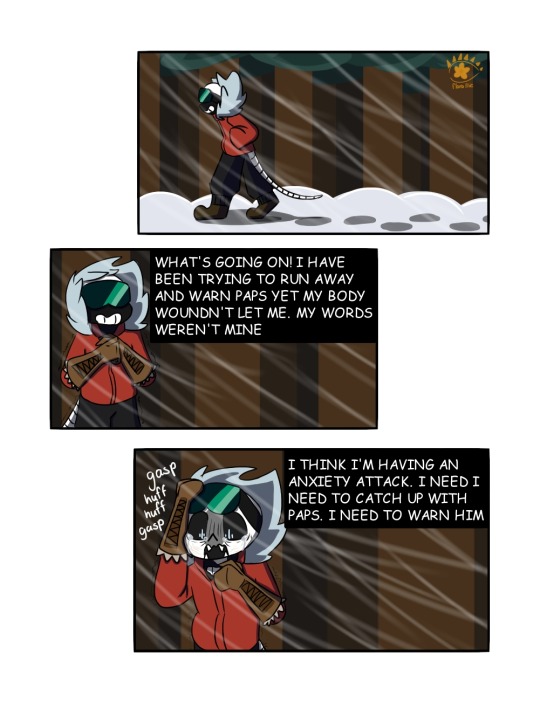

First | <- Prev | Next ->
@hheisa I wonder which sans has more anxiety, mine or yours?
2 notes
·
View notes
Text

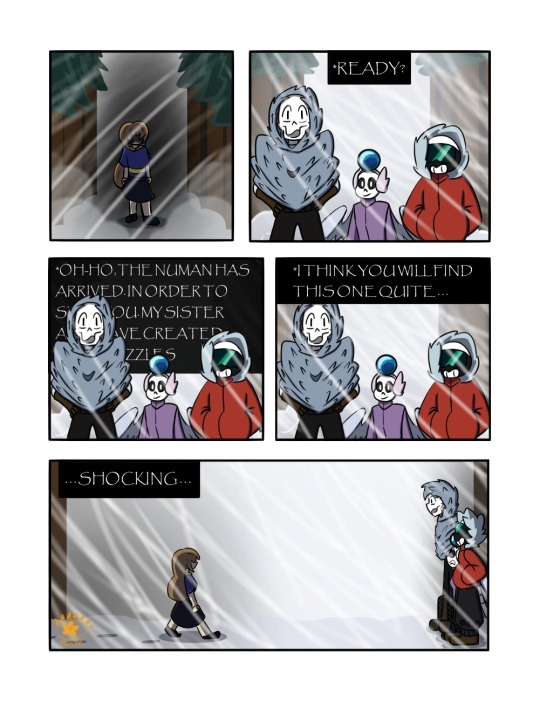
First | <- Prev | Next ->
my first post of the year
Papyrus cares deeply for his siblings. I am thinking of changing the colors on Sans and Nyala
0 notes
Text
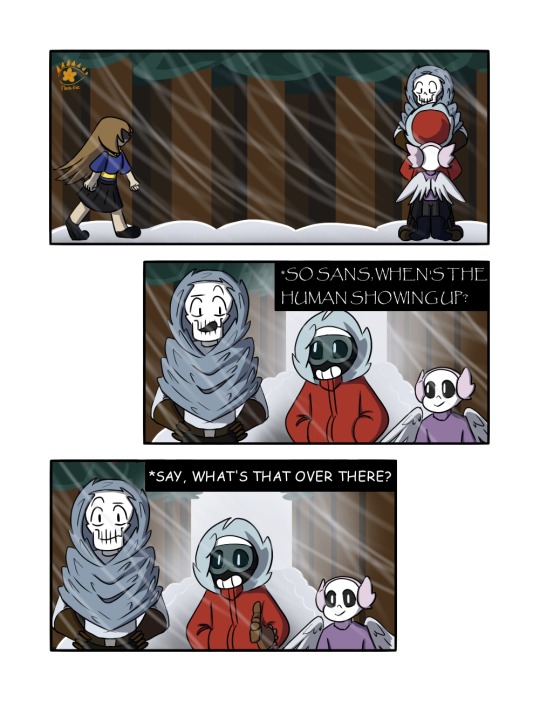

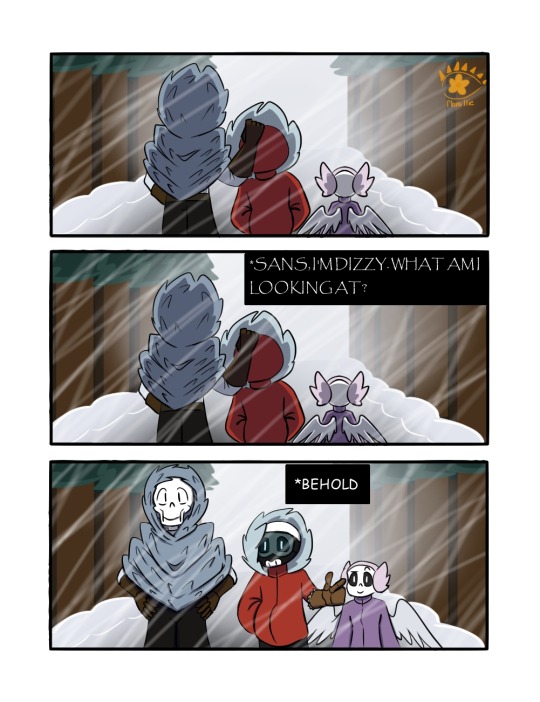
First | <- Prev | Next ->
watching Sans and Papyrus spin in circles was my favorite part of the game. It's such a goofy little addition into their character.
1 note
·
View note
Text

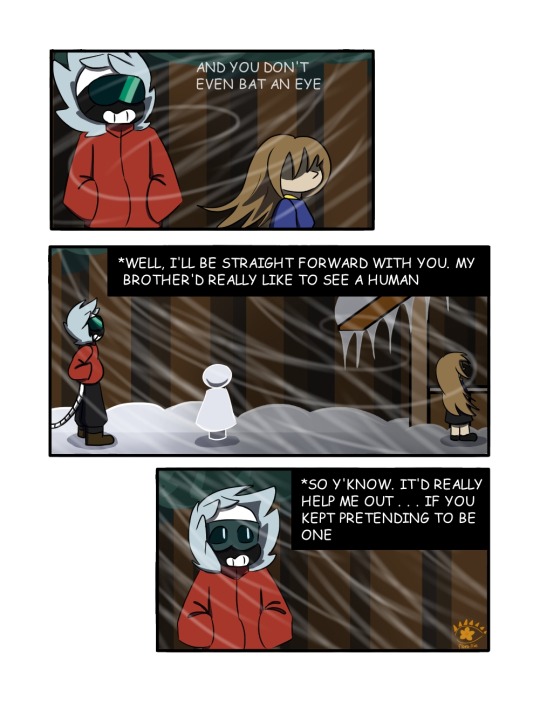
First | <- Prev | Next ->
It is snowing where I live and I am excited to go snowboarding.
shadows are hard but I am getting better.
1 note
·
View note
Text
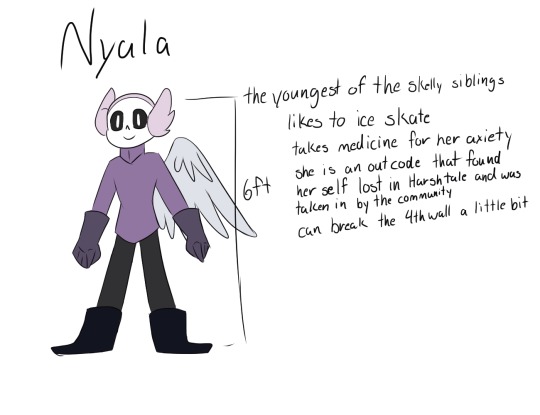
here is Nyala, she is named after a font. one sadly Krita doesn't have, but it is in google docs.
0 notes